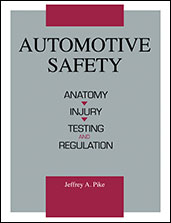Technical Paper
A Biomechanical Analysis of Head, Neck, and Torso Injuries to Child Surrogates Due to Sudden Torso Acceleration
1984-10-01
841656
This paper reports on the injuries to the head, neck and thorax of fifteen child surrogates, subjected to varying levels of sudden acceleration. Measured response data in the child surrogate tests and in matched tests with a three-year-old child test dummy are compared to the observed child surrogates injury levels to develop preliminary tolerance data for the child surrogate. The data are compared with already published data in the literature.

